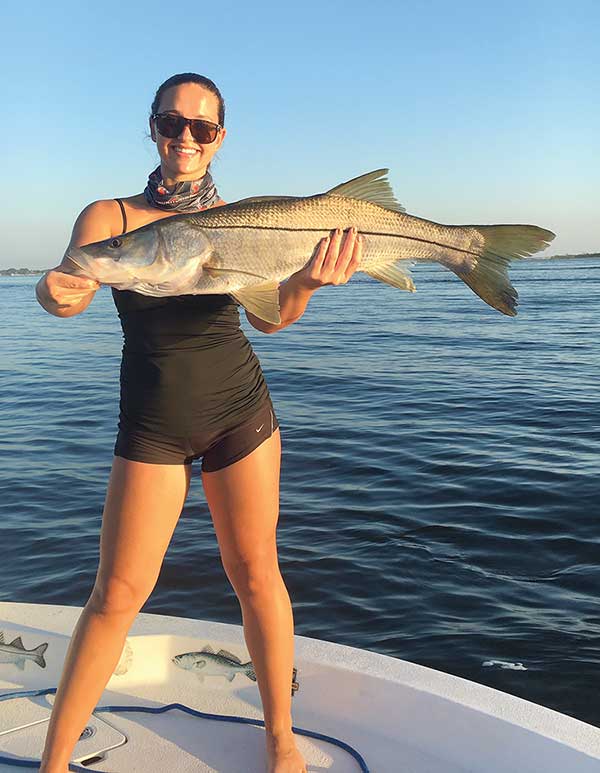FWC Photo
By Ed Killer
STUART, FLA— It’s a well-known fact that Stuart and Martin County are often referred to in fishing circles as “The Sailfish Capital of the World.” What is lesser known, but just as true, is that this area of Florida’s Treasure Coast could also be called “Snook City” or “Kingfish Kountry” for the same reasons the sailfish has become a community icon.
Sailfish Capital of the World was a hard-earned and appropriate moniker first penned in an outdoors column in 1938 by a journalist who worked for the Miami Herald.
The writer had been a guest of Ernie Lyons, longtime editor of the Stuart News, along with several other outdoor columnists from other areas of the country during a week in January 1938. Lyons, a savvy and colorful columnist, knew Stuart’s true gifts to the world lay in its subtropical location and proximity to world-class sportfishing. Working with local tourism officials and the charter fishing fleet, Lyons and Stuart lucked out when a particularly strong run of migrating sailfish passed offshore of the St. Lucie Inlet. That week, an estimated 1,000 sailfish were caught, and most were released, during what was described as an unprecedented confluence of fish and skilled anglers. Typically, in this region, trolled dead baits are used to catch them in 80 to 160 feet of water only a few miles off the shore.
But the rivers and inshore waters of the area have also always been full of memory-making fish of a lifetime. The snook fishing in Stuart has always been exceptional. The waters of the St. Lucie River, although sometimes beleaguered by Lake Okeechobee discharges, are still home to five subspecies of snook. Nowhere else in the world can this claim be made.
Common snook as long as one’s leg and near state record status, or small tarpon snook with a tarpon-like eye and mouth, but snook like body, or the fat snook, which looks like a humpback fish, can all be caught within 3 miles from where a sailfish can be caught.
What’s beautiful is that snook can be caught on a wide variety of live or dead baits like mullet and shrimp, artificial lures and flies, and can be caught from boats, on foot, from bridges, docks, wade fishing, on the beach, near spillways and pretty much anywhere water can be accessed.
As for kingfish, anglers can find a personal best swimming less than a mile off Martin County beaches during these months. The Southern Kingfish Association, the nation’s largest saltwater tournament trail, has made plans to fish its 2016 and 2017 National Championship tournament in these waters for that very reason. King mackerel up to 60 pounds are possible, and numerous kings between 30 and 40 pounds will be caught by tournament fishing teams. Winners will take home boat-motor-trailer packages worth tens of thousands of dollars.
Large lively live baits are the best way to land a trophy tournament-winning kingfish, but if it’s fun fishing, these sporty predators will eagerly take dead baits like ribbonfish, live blue runners or bluefish, or even lures.
All three of these remarkable catches are available and eager to feed this time of year. Regardless of one’s desired type of fishing, there are plenty of options to be enjoyed in the Sailfish Capital of the World.
Ed Killer is an Outdoors columnist with Treasure Coast Newspapers and the USA Today Network.
[easy-social-share]
